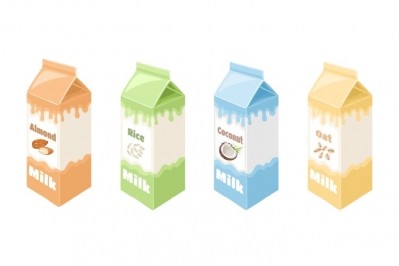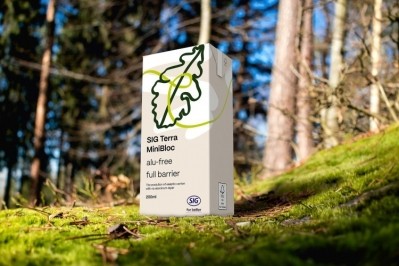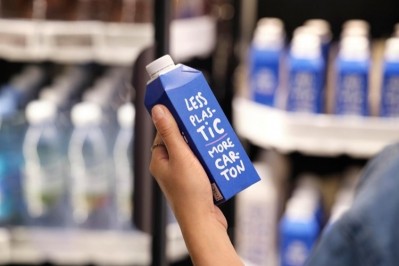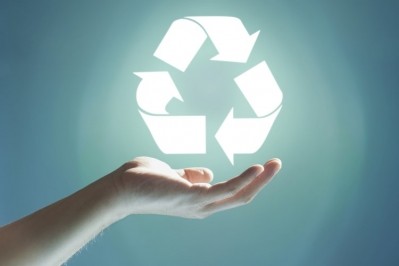SIG to increase paper content in F&B cartons to 90% by 2030
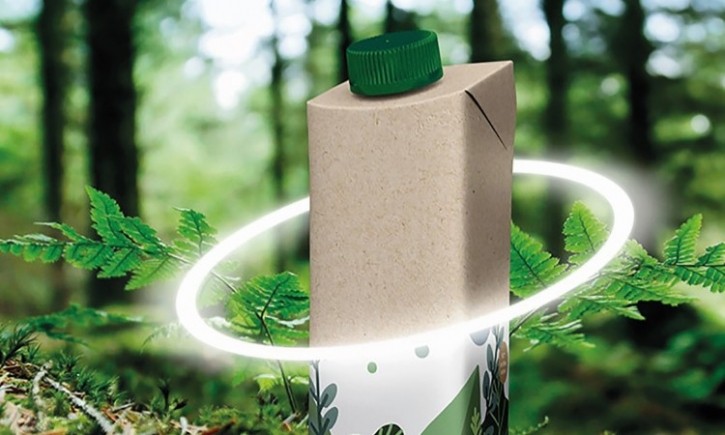
To achieve this, SIG has set out to create an aluminum-free, full-barrier aseptic packaging structure that contains at least 85% fiber content by 2025, ramping this up to at least 90% by 2030. The new packaging will also benefit from new type of lamination process to ensure it’s recyclable through the standard pulping process.
“In order to be collected and recycled with wastepaper, an aseptic carton pack needs to meet specific requirements,” Stefan Mergel, head of sustainability and digital marketing at SIG, told us. “We want to achieve this by significantly increasing the fiber content and changing the way we laminate the carton packaging in our existing extrusion lines so that aseptic carton packs can be recycled in the same standard process as wastepaper.
“Based on these changes, the aseptic carton then requires a shorter pulping time and can be recycled in the same pulping process as waste paper.”
Currently, two-sided laminated packaging – such as milk and beverage cartons - is not accepted in the wastepaper stream due to the longer pulping time this packaging requires, and its higher density. Instead, the materials must be pulped in enhanced paper mills, e.g. hydro pulpers. Traditional aseptic cartons contain around 75% of fiber content, the rest being a mix of plastic and aluminum, which can be further recycled but can also end up in landfill.
SIG said it is working with industry partners and recyclers globally to evaluate what’s required in order to expand the collection and recycling routes for aseptic carton packs. “A higher paper content with the ultimate goal of unlocking the paper recycling stream for carton packs will also increase recycling everywhere in the world and contribute to a circular economy,” Mergel explained.
But there are challenges, starting with the production of this high-fiber content packaging. As Mergel said, “The biggest challenge is to ensure consistently excellent barrier properties, which our standard aseptic packs offer,” adding that the company already has more than 10 years’ experience developing full-barrier aluminum-free solutions, such as the combibloc EcoPlus range launched in 2010 and the recently-launched Signature Evo range, which debuted in 2022.
But there’s more that can be done to push the alu-free packaging envelope in the future, as Mergel explained. “For packaging materials with increased paper content, we will further reduce the polymers in the sealing layer and use new technologies that are compatible with our ultrasonic sealing solutions, so that customers can run the high-fiber packaging materials on our standard filling machines with only minor adjustments,” he told us. “Our aim is to create the high-fiber material as a full-barrier aluminium-free aseptic packaging structure enabling customers to cover the entire beverage portfolio that they used to offer in carton packs.”
The carbon footprint of a carton pack is up to 70% lower than plastic or glass bottles, but its multi-layer structure means it can be more difficult or even impossible to recycle without involving specialized processing infrastructure, with a range of chemical, mechanical and thermal processes involved in separating the different layers. According to the Alliance for Beverage Cartons and the Environment (ACE), 51% of beverage cartons in the EU are being recycled; in the US, the Carton Council claims the rate was 20% in 2020 while Canada managed 56% in 2021.
